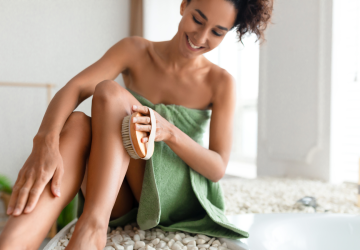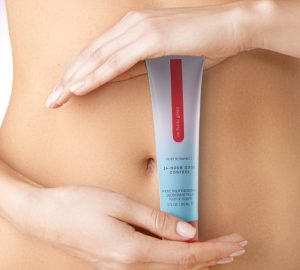Ah, summer. That beautiful time of year when the world has thawed out, the birds greet you each morning, and the air is thick with friction-inducing moisture – wait what?
That’s right! The spring and summer months are a time for getting outside, feeling the warm sun on your skin, and, often, it is peak chafing season. While it is a great time to break out your favorite shorts and dresses, chafing can deter you from enjoying the breeze on your legs because you’re worried about your irritated skin. Let’s not forget how easily chafing can be taken to the extreme and it can happen in more places than you expect… like with Andy Bernard.
Below, we’ll cover all things chafing: what it is, its causes, and some helpful tips for preventing it! So, what’s the rub? Let’s dive in.
What is Chafing and What Causes It?
Chafing is a common skin problem most of us have experienced. It can be caused by friction, irritating fabric, moisture, or any combination of the three. If chafing is not remedied, it can cause blisters – a much more painful symptom where fluid fills up space between layers of your skin. If you’ve ever worn too-tight shoes for a long time, you know what I’m talking about.
5 Ways to Prevent Chafing
-
Wear well-fitting clothes
One of the main causes of chafing is ill-fitting clothing. When your clothes are too tight, they are more likely to have constant contact with your skin, causing friction and, ultimately, skin irritation. Therefore, it’s important to wear clothes that fit right during the spring and summer months. With this, your clothes are less likely to stick to you, rub against your skin, and cause chafing. Plus, warmer months are the perfect time to break out those flowy pants and sundresses, two perfect options for preventing clothes from coming into contact with your skin.
-
Wear moisture-wicking clothes
As mentioned above, moisture is another cause of chafing. This moisture can stem from humidity in the air or sweat. Have you ever gone for a run in the summer and find yourself sticking to your clothes the whole way home? That’s cause for chafing.
To avoid discomfort this spring and summer, consider wearing moisture-wicking clothes. These clothes are water-absorbent, helping to take the moisture off your body. Athleisure is your best bet for moisture-wicking clothes, so be sure to check how absorbent your leggings are before your next morning run or chill weekend. Additionally, consider trying moisture-wicking undergarments to stop chafing in your most sensitive areas.
-
Protect areas prone to chafing
Two areas most prone to chafing are your thighs and feet. While it can be difficult to go fabric-free in these areas, you can still save your skin! You’ll want to keep these areas smooth and dry to prevent friction caused by rubbing against other skin. For this, consider applying baby powder, or a cream-to-powder lotion like our anti-friction elixir Chafe Escape!
-
Stay clean and dry
This one sounds like a no-brainer but may be an overlooked cause of skin irritation. Throughout the spring and summer months, you’ll find yourself outside a lot more. Whether you’re strolling around the city or doing your favorite outdoor activities, you’re bound to sweat and get dirty. Both sweat and dirt cause friction on your skin. It is important, then, to keep your skin clean and dry. Showering daily and wiping down after exercise are two key ways to abate the chafe this spring and summer.
-
Swim suits are meant for swimming
If you plan to hit the beach this summer, you should also plan to bring a change of clothes. While it may be more convenient to simply leave on your dry bathing suit after a long beach day, it may be hurting you more than you think! Sand is bound to get trapped in your bathing suit, no matter how hard you try to keep it out. This sand, like dirt, will stick to your skin, rub against it, and cause chafing – not the way you want to end your beach day. Consider bringing something flowy and comfortable to change into before you head home. Ensure that your post-beach day woes do not extend beyond religiously applying aloe to your sunburn.
How to Treat Chafed Skin
Forgot to try the prevention methods above? No sweat 😉! We’ve got you covered with the best steps for treating your chafed skin below.
-
Cover the affected area
You want to keep the irritated skin protected from further irritation. One of the best ways to do this is to loosely apply a bandage over the area so it doesn’t come in contact with any other skin or fabric while it heals.
-
Wear loose-fitting clothes
Just like what we said above, tight clothing can cause chafing as the clothing rubs against your skin and causes friction. To ensure that the affected area can heal properly, wear clothes that will let it breathe.
-
Leave it alone
Your irritated skin may be itchy or painful, but don’t touch it! This area needs to heal on its own without sweat, moisture, other skin, or tight fabric making the issue worse. Your skin is an incredibly resilient organ. If you leave the area alone, it should heal in a week or two.
With all this information, you’re now prepared to take on the coming months with no fear of chafing! So go ahead, break out the shorts, bikinis, and sundresses and face the coming months with full confidence.









